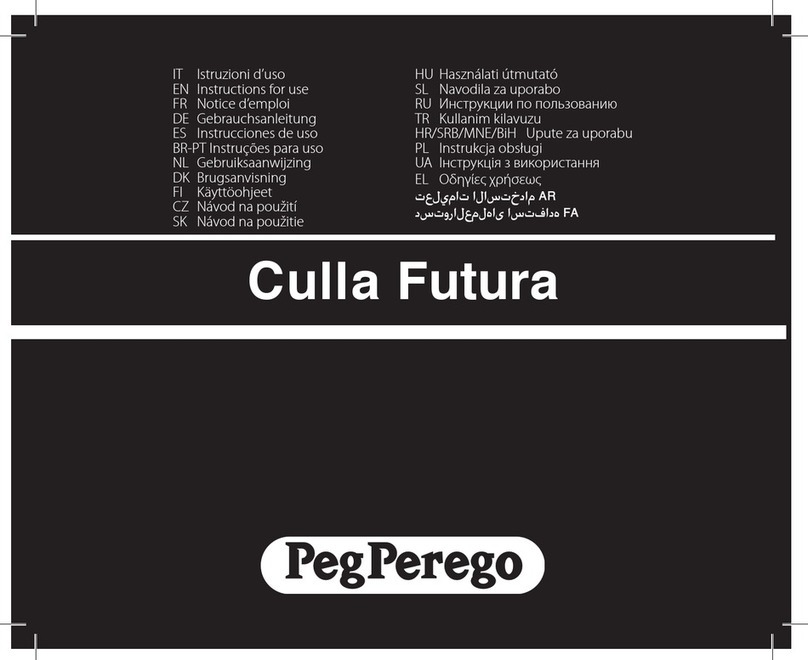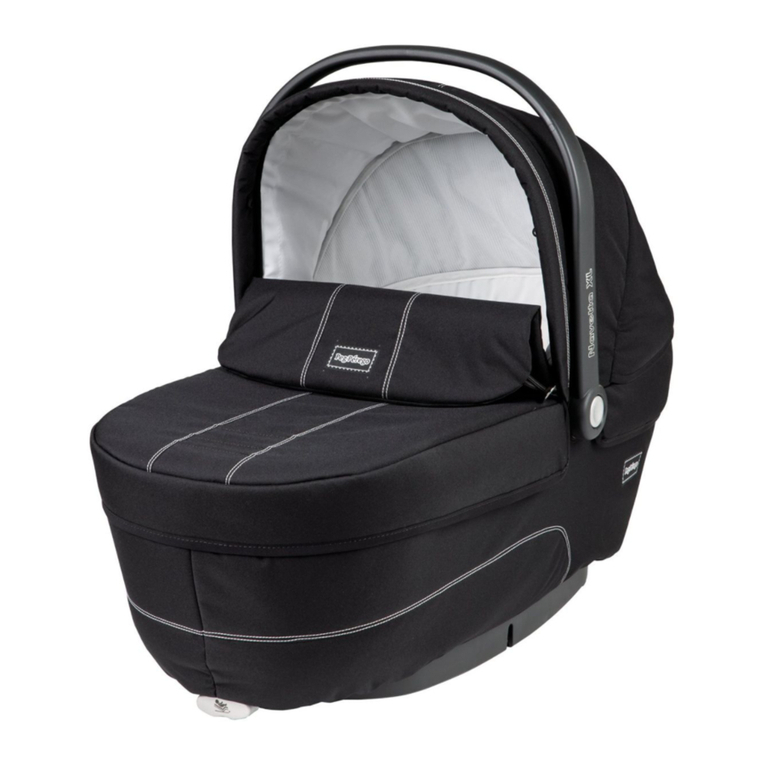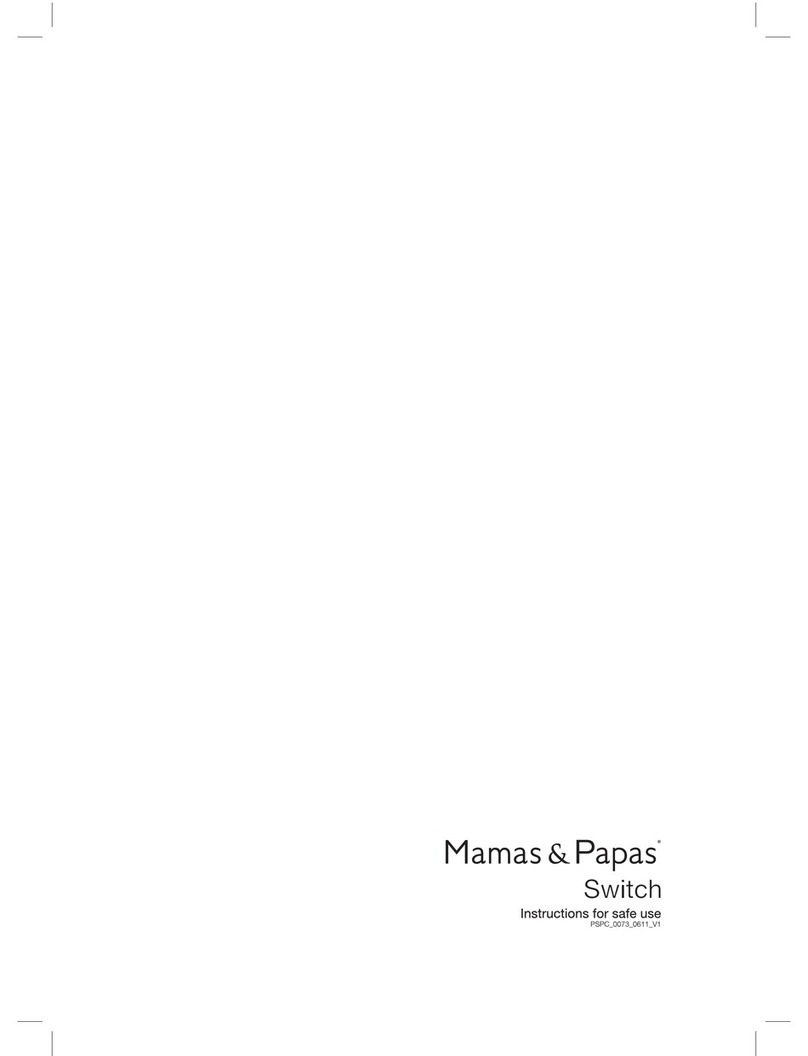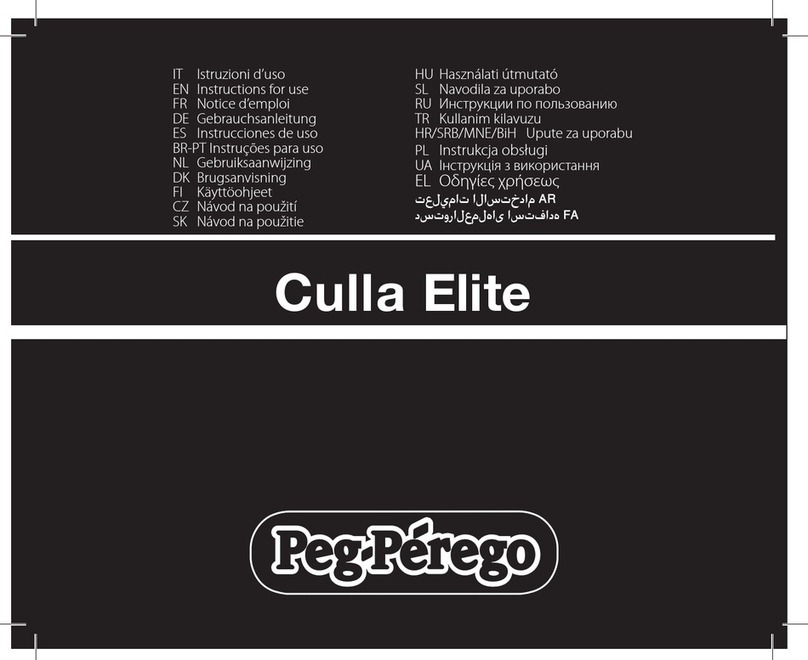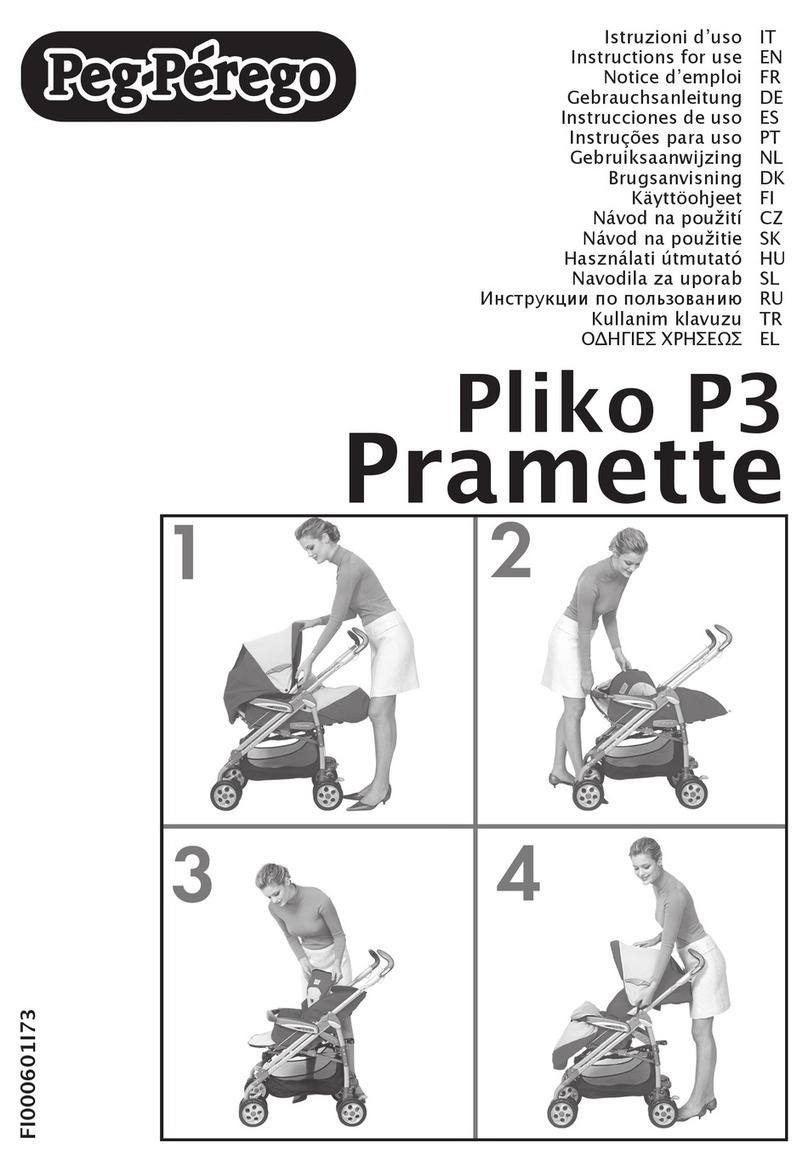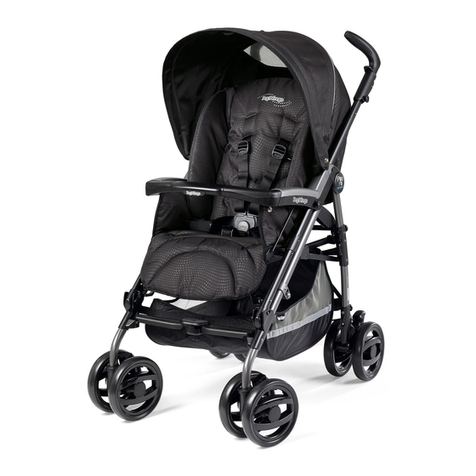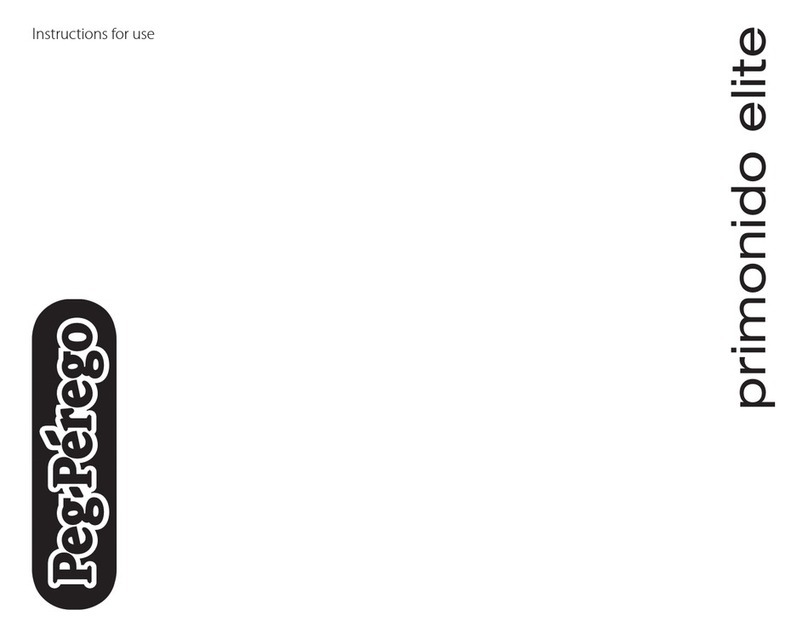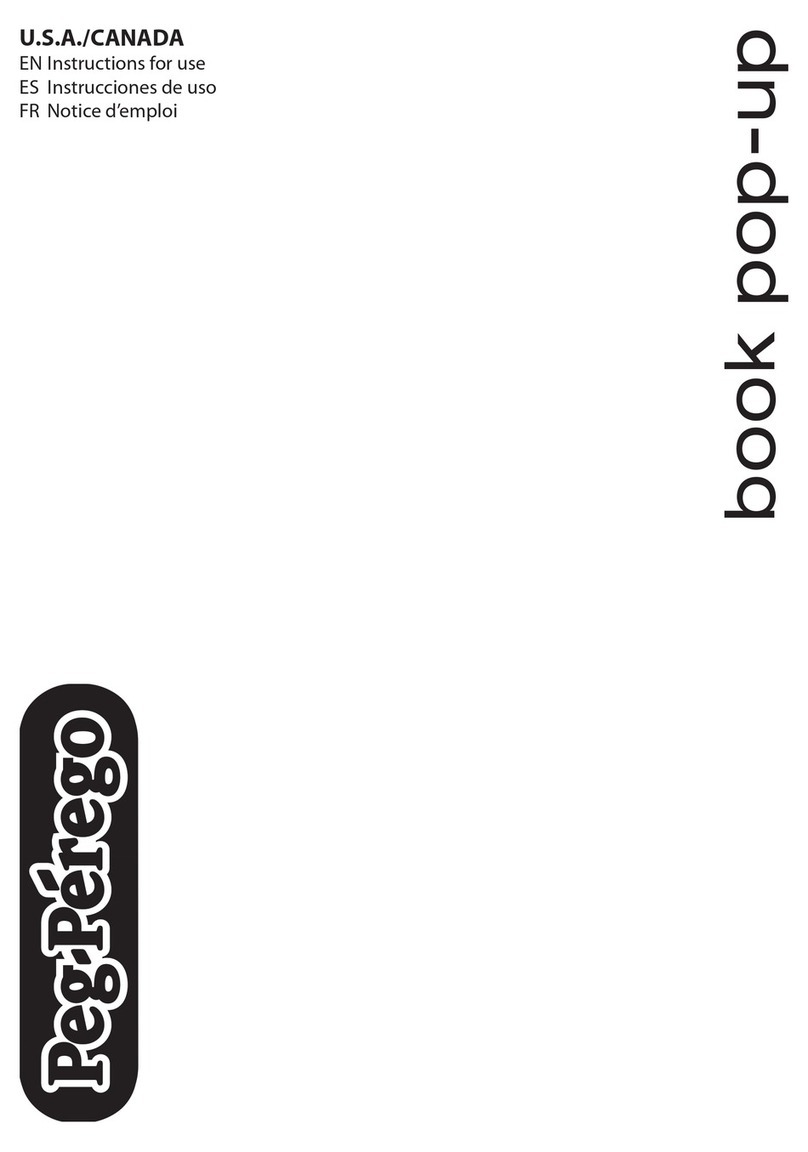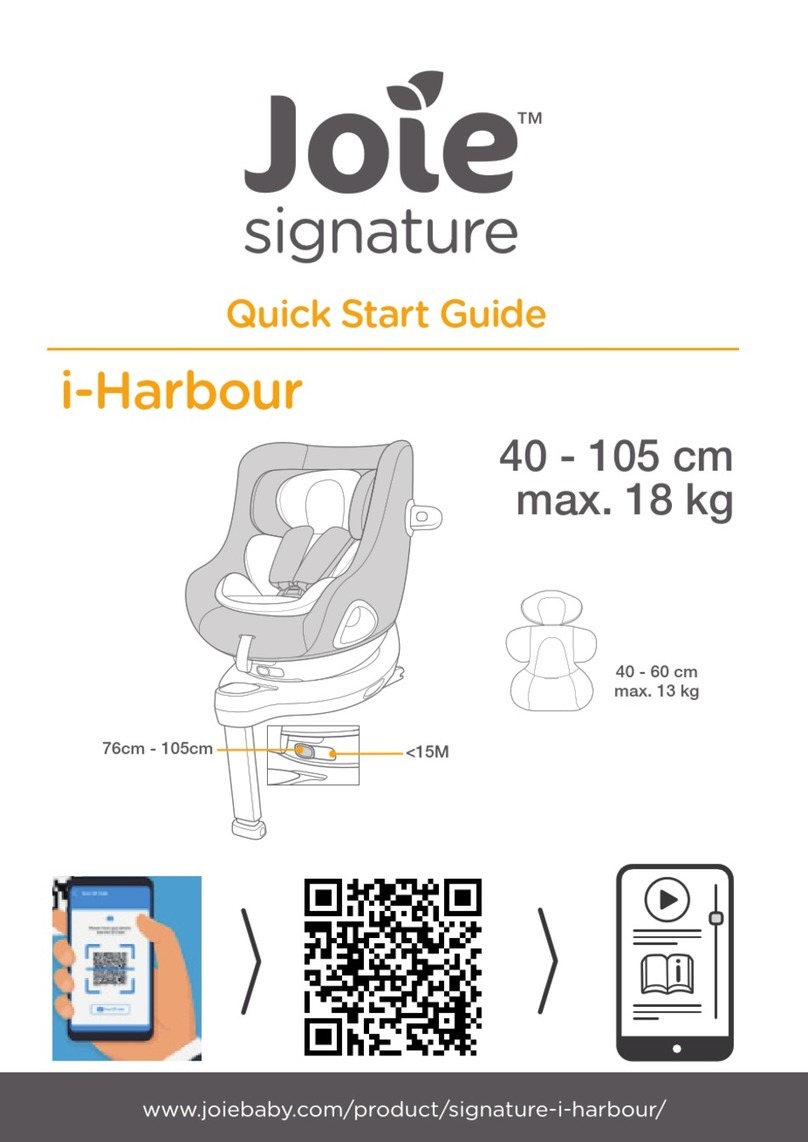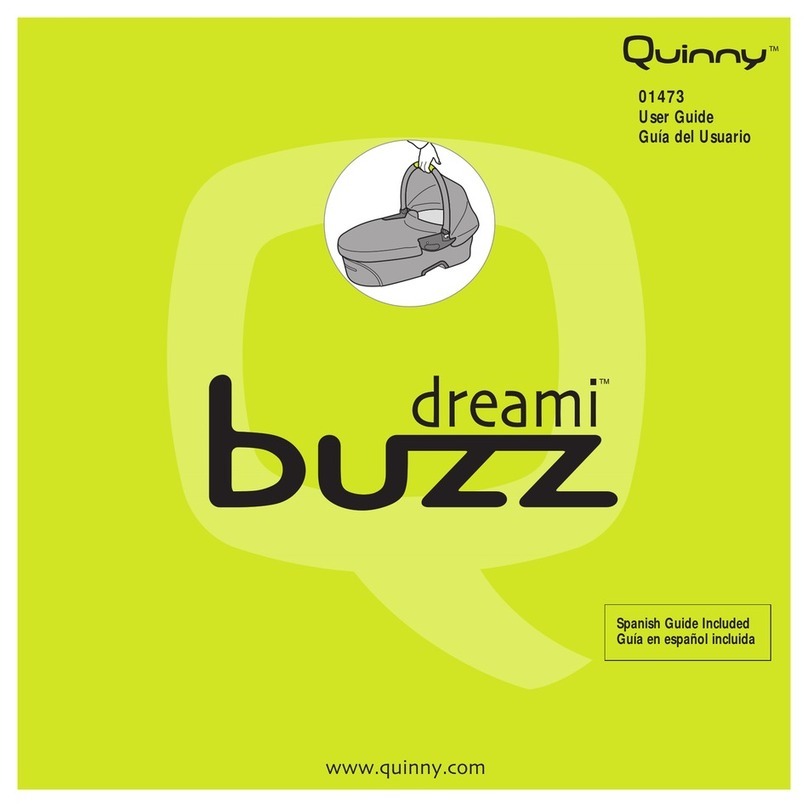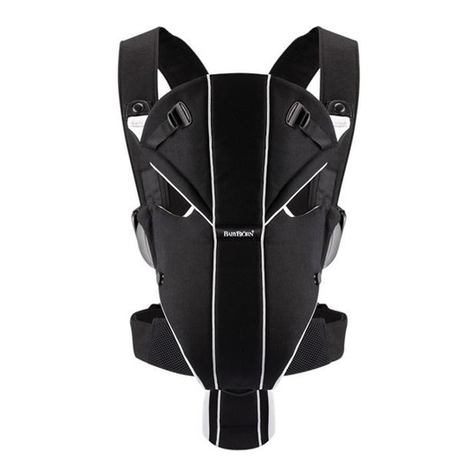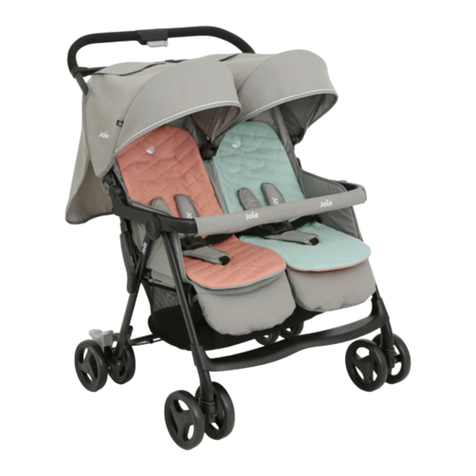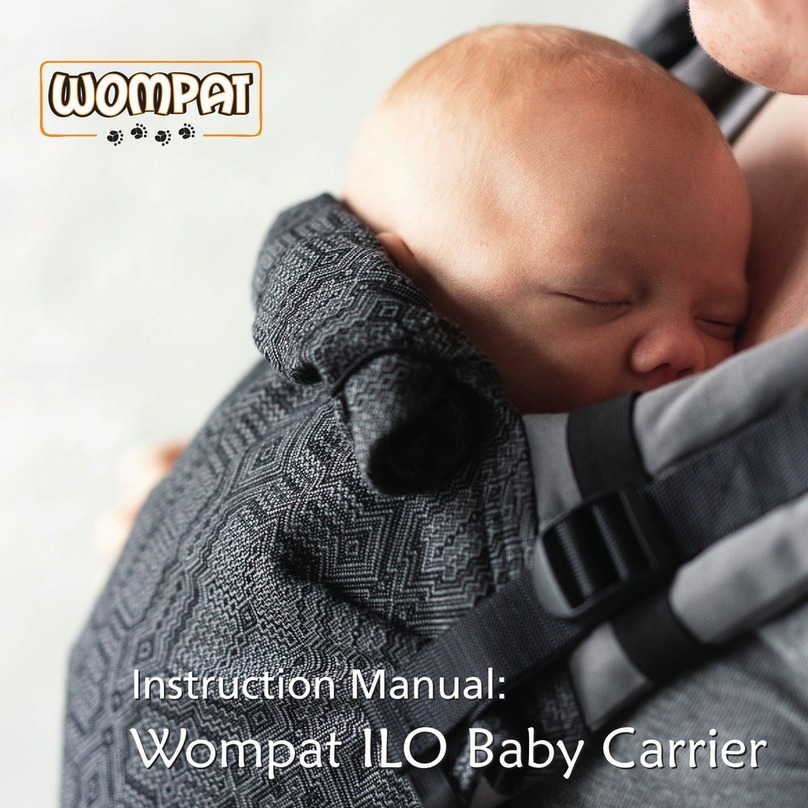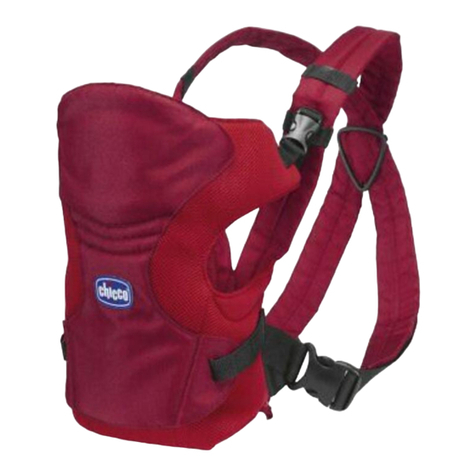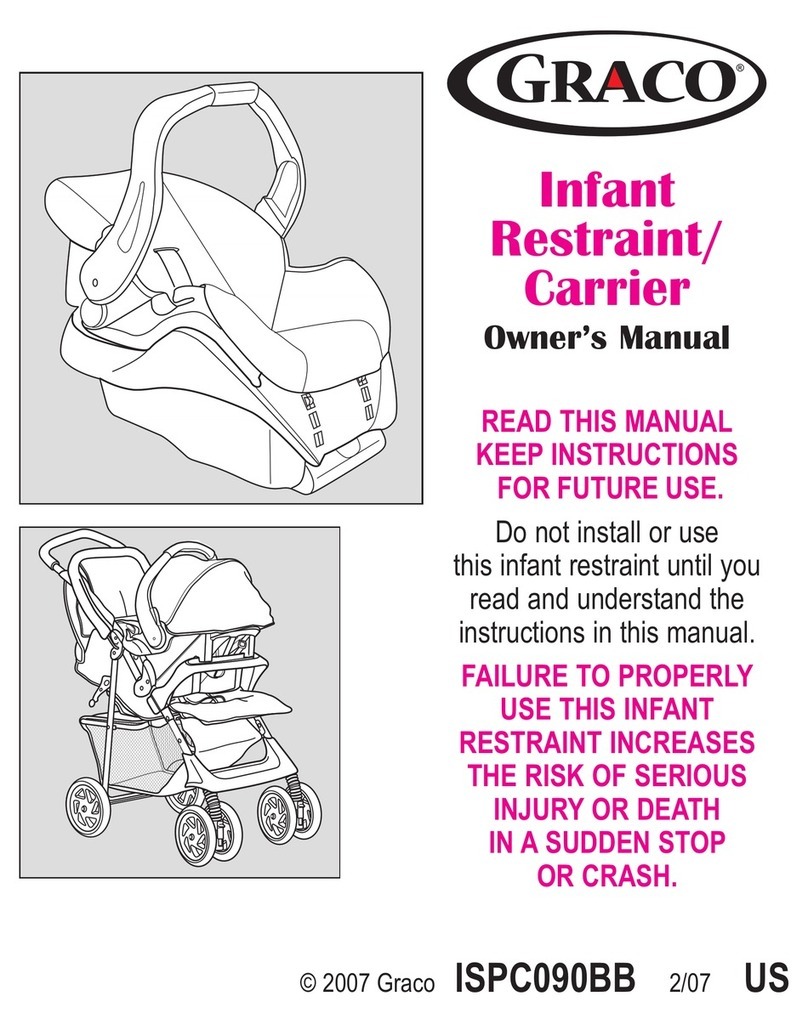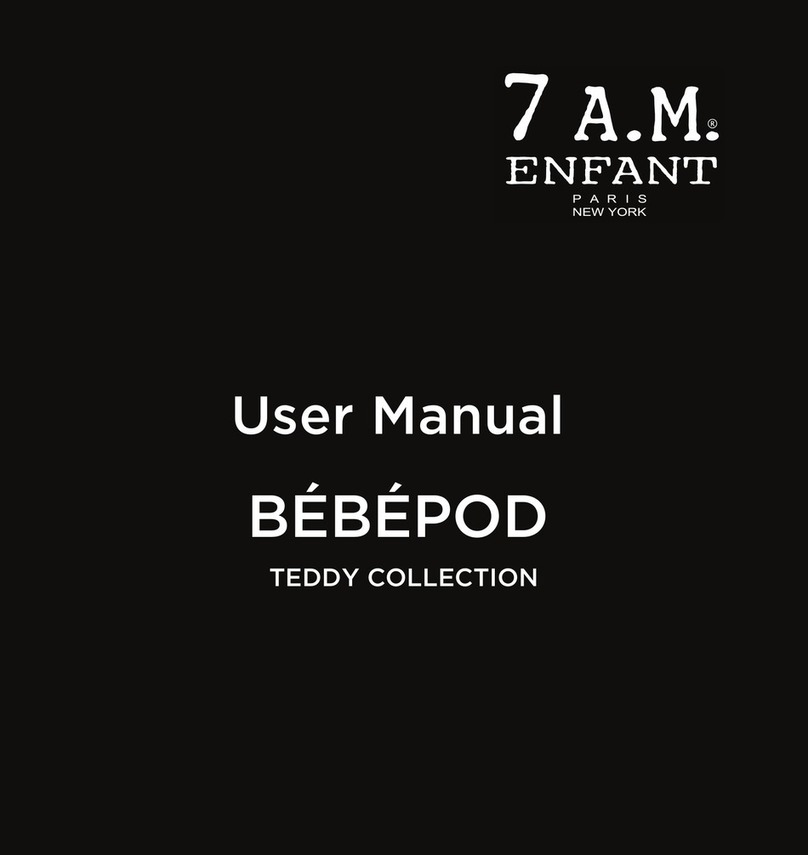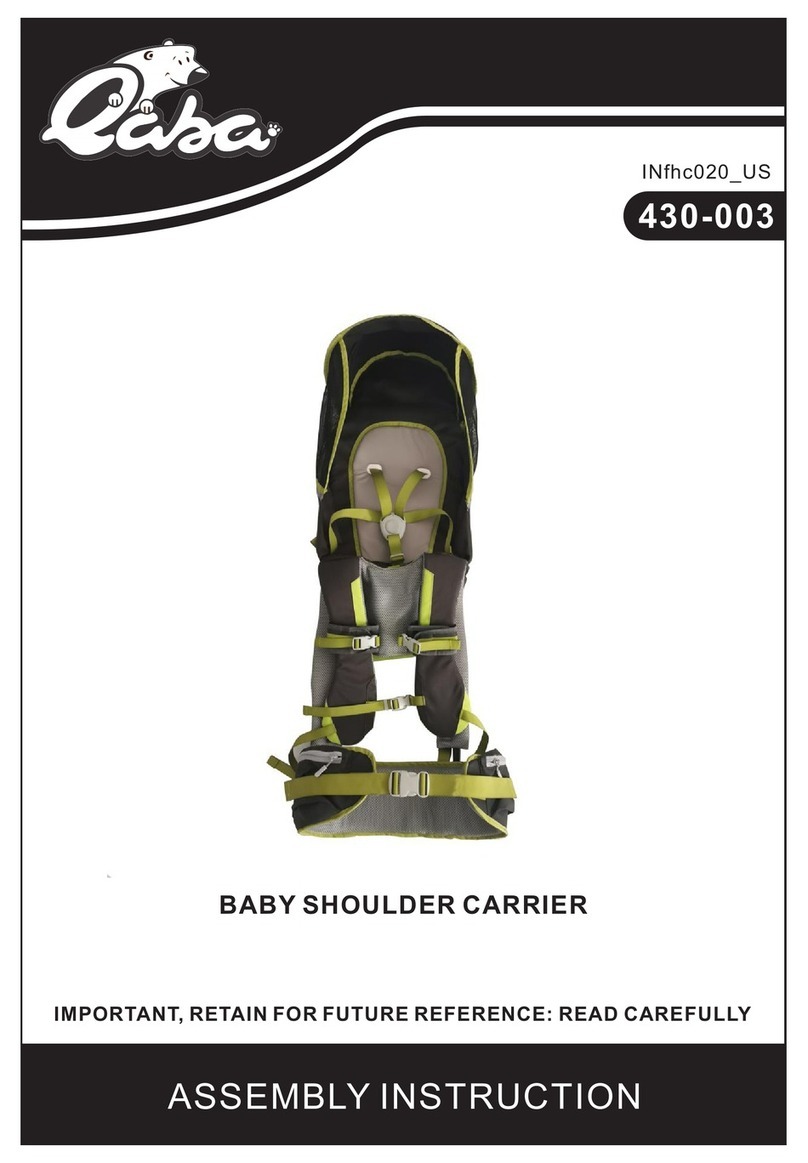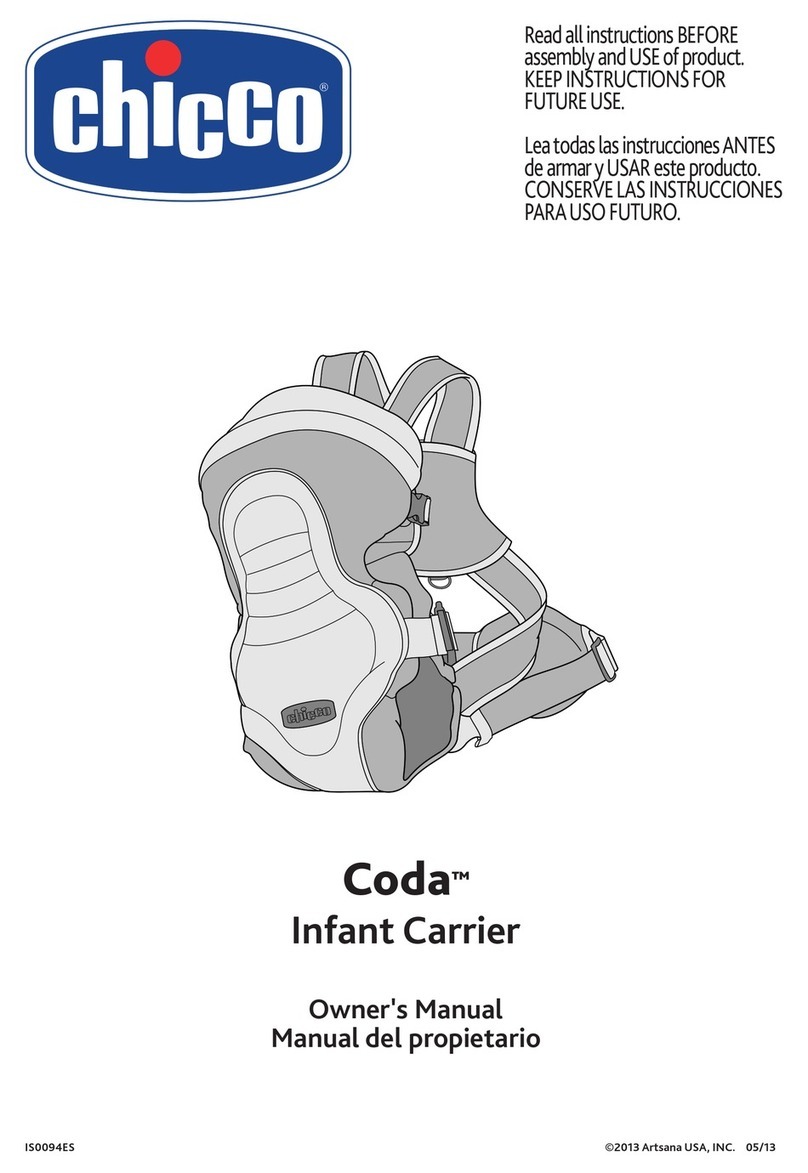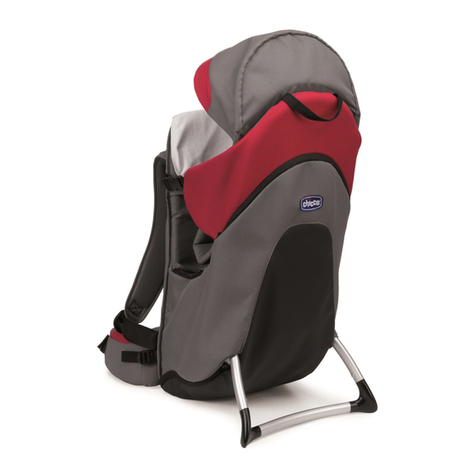
9
• Non utilizzare Navicella auto senza il rivestimento di tessuto,
tale rivestimento non puó essere sostituito da uno non
approvato dal costruttore in quanto costituisce parte
integrante di Navicella auto e della sicurezza. In caso di
sostituzione utilizzare un ricambio originale.
• Navicella auto é stata progettata con dispositivo di
assorbimento d’urto in polistirolo, integrato direttamente
nella scocca, sotto l’imbottitura: non rimuovere.
• Questo prodotto è adatto solo a bambini che non si
possono mettere da soli in posizione seduta.
• Questo prodotto e' inteso per bambini dalla nascita fino a 9
kg di peso. Usato in auto inteso fino a 10 kg di peso.
• Utilizzare solo su superfici dure, orizzontali ed asciutte.
• Non lasciare altri bambini a giocare incustoditi vicino alla
carrozzina.
• Prestare attenzione alla presenza del bambino quando
si effettuano operazioni di regolazione dei meccanismi
(maniglione, schienale).
• Controllare regolarmente il maniglione (o le maniglie) ed
il fondo della carrozzina e verificare l'assenza di segni di
rottura o danneggiamento.
• Nell'utilizzare la carrozzina con uno stand, verificate la
massima lunghezza della carrozzina specificata sullo stand.
Istruzioni d’uso
Kit Auto
Come montare il cinturino di sicurezza
IMPORTANTE: durante il trasporto in auto, è possibile
utilizzare il nostro materassino a tre punti.
IMPORTANTE: in auto tenere sempre lo schienale in
posizione orizzontale.
1• Posizionare la navicella auto con schienale e capottina
abbassate e, se presente, maniglione alzato.
2•
CINTURINO A 3 PUNTI: Infilare il cinturino spartigambe nella
fessura del materassino (fig_a) e nelle fessure della scocca
(fig_b) fino ad oltrepassarla (fig_c).
3•
Infilare le due estremità delle bretelle nelle fessure del
materassino e della scocca (fig_a) e agganciarli ai perni (fig_b).
4•
Cinturini aggangiati sotto la scocca (fig_a) e internamente a
Navicella auto (fig_b).
Aggancio in auto con cinture di sicurezza
AGGANCIO DELLA NAVICELLA IN AUTO: Il sedile posteriore
dell'auto (a 3 posti) ha 3 cinture di sicurezza e quella
centrale può essere dorsale o ventrale, in entrambi i casi è
possibile procedere all’aggancio della navicella in auto.
Consigliamo di posizionare la navicella sul sedile posteriore
lasciando il lato della testa in corrispondenza del sedile
centrale.
5• Navicella auto posizionata in auto con cintura ventrale.
6• Navicella auto posizionata in auto con cintura a 3 punti.
7• Navicella auto, è posizionabile anche centralmente al sedile
posteriore a 3 posti, utilizzando le due cinture di sicurezza
più esterne (fig_a) Navicella auto non è posizionabile come
in fig_b perchè può essere fissata in auto solo con cinture
orientate in senso opposto.
8• Posizionamento di Navicella auto su sedile posteriore a
2 posti. Navicella auto può essere rivolta con la parte dei
piedi del bambino sia da un lato che dall'altro.
Se il sedile dell’auto non è in piano ma inclinato si può
renderlo orizzontale con degli asciugamani.
9• Prendere la cintura del sedile posteriore, piegarla come
in figura (freccia_a) e infilarla nella fessura della fibbia
metallica del kit auto (freccia_b).
10• Infilare la leva rossa della fibbia metallica del kit auto
all'interno della cintura ripiegata (freccia_c).
Avvicinare la fibbia metallica in più possibile al sedile per
facilitare poi l'aggancio alla Navicella (freccia_d).
11• Agganciare il connettore del kit auto all'anello della
Navicella e tendere la cintura con forza per far aderire
maggiormente la Navicella al sedile .
• Ripetere le stesse operazione dall'altro lato della Navicella.
12• Navicella auto agganciata in auto.
13• SGANCIO DELLA NAVICELLA DALL' AUTO:
premere il pulsante di regolazione sul connettore, come
in figura per allentare le cinture. Sganciare il gancio del
connettore del kit auto, dall'anello della Navicella.
IMPORTANTE: il kit auto può rimanere sempre
agganciato alle cinture della nostra auto. Con un
semplice gesto basterà solo agganciare o sganciare la
fibbia del kit auto dall'anello della Navicella (punto 13).
IMPORTANTE: non lasciare il kit auto agganciato alla
